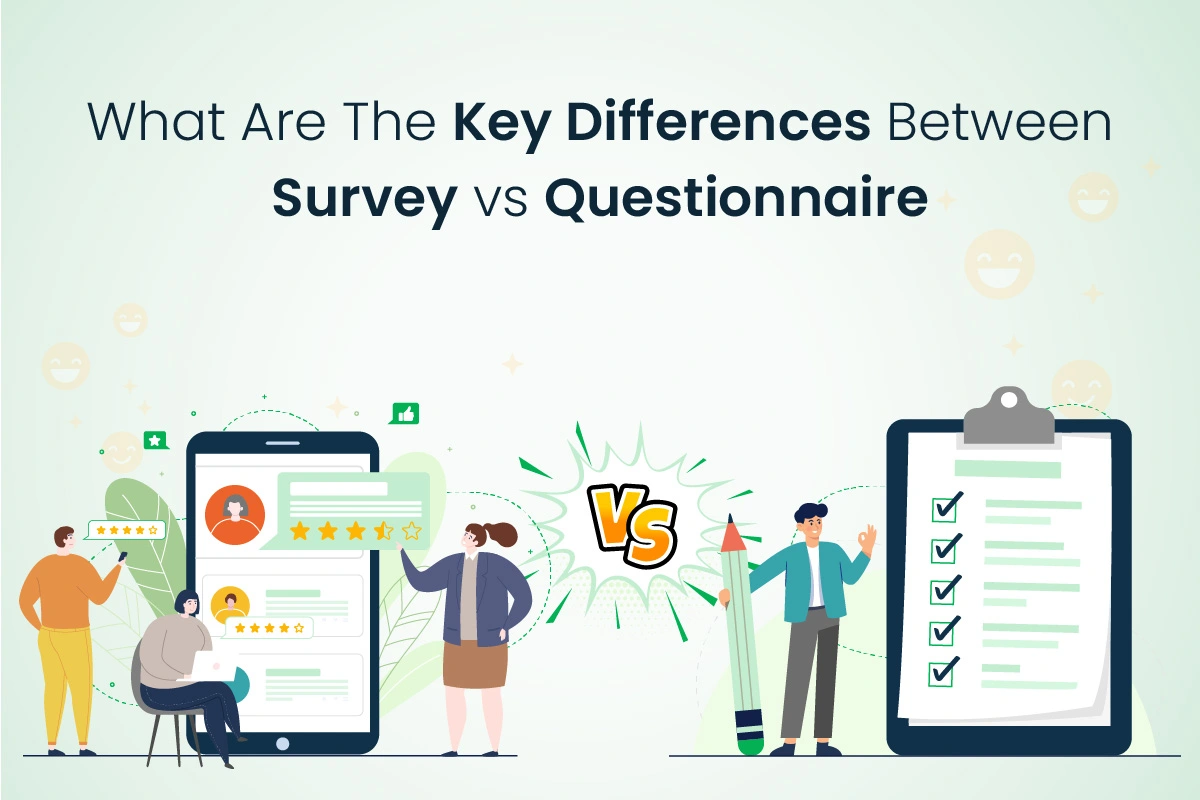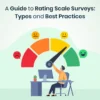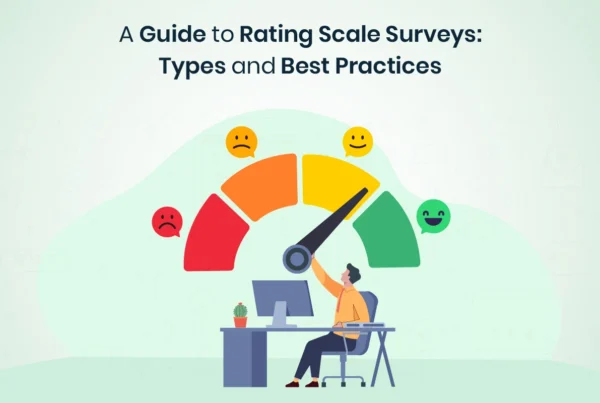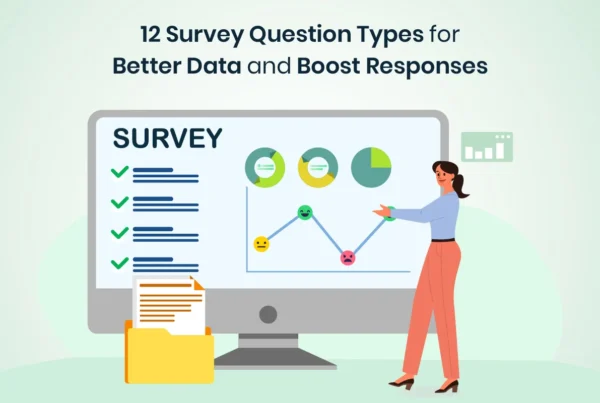“Survey” and “questionnaire” are two terms we often hear when talking about collecting feedback or doing research. They’re frequently used interchangeably, but they’re not exactly the same.
At first glance, surveys and questionnaires might seem like the same thing. After all, both involve asking questions, right? But when you look closely, you’ll find that there are clear differences between the two.
In fact, confusing the two can lead to misunderstandings, especially when planning research, setting up feedback systems, or measuring customer experience.
Scroll down to find the major differences between a survey vs questionnaire.
What are the differences between a survey vs questionnaire
Think of it this way: all surveys have questionnaires, but not all questionnaires are surveys. A questionnaire is simply a list of questions, while a survey is a broader process that involves collecting, analyzing, and interpreting data, often using a questionnaire as one of the tools.
Here are the primary differences between survey vs questionnaire:
Definition
Questionnaire: A questionnaire is basically a set of written or digital questions. These can be open-ended (where people write their answers) or close-ended (like multiple choice or rating scales). The goal is to collect data or opinions. But on its own, a questionnaire is just a list of questions, it doesn’t include what happens after people answer them.
Survey: A survey is the entire process of gathering feedback or information. It includes creating the questionnaire, deciding who to send it to, distributing it, collecting responses, analyzing the results, and drawing conclusions. So, a questionnaire is a part of a survey, but a survey is much more than just questions.
Purpose
Questionnaire: The main purpose of a questionnaire is to gather specific data. For example, if you’re collecting basic details like name, age, and preferences, you can use a simple questionnaire. It’s often used when you just need to collect responses without the need for in-depth analysis.
Survey: Surveys are meant to help you understand something bigger like customer satisfaction, employee morale, market trends, and more. The purpose is not only to collect data but to make sense of it and use it to take action. For instance, a business might run a customer satisfaction survey to identify pain points and improve its services.
Scope
Questionnaire: A questionnaire has a limited scope. It’s only about asking questions. That’s it. There’s no guarantee that the responses will be analyzed or used in any formal process.
Survey: A survey has a much broader scope. It includes everything, from planning the objective to collecting data and then analyzing that data for insights. Surveys often involve sampling (choosing who to ask), setting goals, using software tools, and even creating reports based on the feedback.
Types
Questionnaire: There are many different types of questionnaires depending on what kind of information you’re trying to collect. These include:
- Close-ended questionnaires: Yes/No, multiple choice, rating scales.
- Open-ended questionnaires: Where respondents type their own answers.
- Demographic questionnaires: Collecting information like age, gender, income, etc.
- Qualitative or quantitative questionnaires, based on how the questions are framed.
Survey: Surveys come in various formats based on the goal. Each of these surveys might use a different kind of questionnaire that suits the purpose. For example:
- Customer Satisfaction (CSAT) Surveys
- Pulse Surveys (short and frequent)
- Market Research Surveys
- Employee Feedback or Engagement Surveys
Process Involvement
Questionnaire: In many cases, a questionnaire is created, shared, and responses are collected, and it ends there. There might be no deeper analysis, follow-up, or decision-making involved. It’s often just a standalone data collection form.
Survey: Surveys follow a step-by-step process. You start with a clear goal, build a questionnaire, decide who your audience is, distribute the survey, collect responses, and then analyze the data. Most importantly, the results are often used to make decisions, take action, or report insights to stakeholders.
Use Cases
Questionnaire: Best suited for situations where you need to gather basic or factual information. For example: event registration forms, medical history forms, employee joining forms, short customer feedback forms (like “How did we do?”), and more.
Survey: Ideal when you need to gather data at scale, understand behavior or sentiment, and take action based on that data. Common examples include:
- Running a quarterly customer satisfaction survey
- Measuring employee engagement
- Understanding public opinion through a market survey
- Gathering feedback after a product launch
| Feature | Questionnaire | Survey |
| Definition | A set of questions | A data collection method using a questionnaire |
| Purpose | Collect information | Analyze data and gather insights |
| Scope | Limited to asking questions | Broader process including analysis |
| Involves Analysis? | Not necessarily | Yes |
| Use Cases | Forms, polls, general inquiries | Customer feedback, market research, NPS, etc. |
| Types | Open-ended, close-ended, demographic, etc. | CSAT, NPS, pulse, employee, etc. |
Tips to build an effective survey questionnaire
Creating a great questionnaire is the first step to running a successful survey. Here are some helpful tips:
- Keep it short: Long surveys tend to bore respondents and lead to drop-offs. Try to keep your questionnaire concise and to the point.
- Use simple, everyday language: Avoid jargon or complicated words. Questions should be easy to understand for everyone, regardless of background or education level.
- Add logic jumps: Use conditional logic to skip irrelevant questions. This keeps the experience smoother and more personalized for the respondent.
- Maintain a neutral tone: Avoid leading or biased questions that push respondents toward a specific answer. Keep your tone neutral and open.
- Start with easy questions: Begin with simple, non-intrusive questions to ease people in. Save sensitive or complex questions for later in the survey.
- Use a mix of question types: Use a combination of rating scales, multiple-choice, and open-text questions to get both structured and detailed feedback.
- Test before sending: Always test your questionnaire before going live. Check for typos, confusing language, and logic errors.
Wrapping up
While surveys and questionnaires are closely linked, they serve different purposes. A questionnaire is a vital tool within a survey, but a survey goes beyond just asking questions. It’s about gathering insights and driving decisions. So, the next time you are planning a feedback campaign or research study, you’ll know which one you are really building and how to do it right.
Need help designing impactful surveys or crafting smart questionnaires? Start with our CX platform to build, launch, and analyze surveys. Book a free demo to see how it works.








